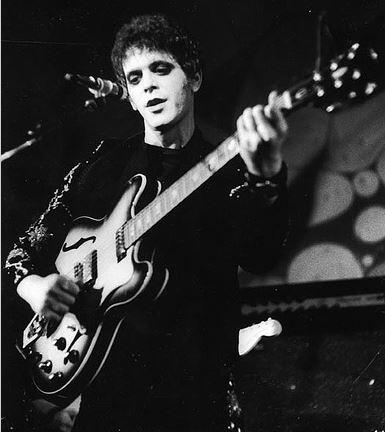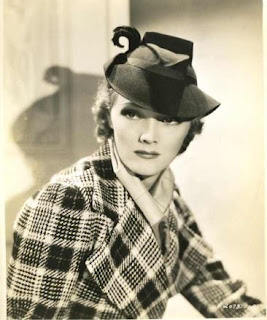 |
Steve Carell: The Incredible Burt Wonderstone
|
VOD pickings have been slim lately. The service is either feast or famine. For several weeks in a row I was treated to some very fine independent films, many of which were reviewed on this space. This weekend the fare was so scarce that I ended up watching The Incredible Burt Wonderstone. I'd heard nothing good about it, but with a good cast, a Las Vegas setting, and a plot involving magicians, I didn't see how anything could go wrong. I ended up staring at the screen in open-mouthed wonder at how a film starring Steve Carell, Steve Buscemi, Jim Carrey, James Gandolfini, and Alan Arkin could be so bloody awful.
Maybe it was the ridiculous wigs. Carell and Buscemi are supposed to be a pair of Las Vegas magicians, ala the old tiger tamers from a few years back, and they're dressed to the glorious hilt. One can imagine the committee that created this movie sitting around at a board meeting, laughing hysterically at the idea of Carell in a puffy wig, his skin bronzed by a sun lamp. But Carell's slick Las Vegas get-up isn't funny beyond the first time you see it.
Also, I can't understand how the characters played by Carell and Buscemi, who were supposedly friends in childhood, grew up to be several years apart in age. Regardless, we're to believe they become very famous, until their ruthless promoter (Gandolfini) fires them because their ticket sales are lagging. After 10 years of success, the magical duo is being usurped by a crazed new street magician (Carrey). Carell and Buscemi split, and Carell ends up doing his act at a nursing home, where he meets his aging childhood idol (Arkin). His interest in magic renewed, Carell rejoins Buscemi, and comes up with a rather unlikely magic trick to upstage the renegade Carrey and get their job back. (By the way, there are four screenwriter credits for this, which is akin to hiring four people to finish a child's connect the dots puzzle.)
Wonderstone is directed by revered television veteran Don Scardino, who hasn't directed many features. This film has the feel of television, with plot points wrapped up neatly. My own magical powers must have kicked in during the movie because I could predict nearly every line before it was said. The one saving grace is Carrey, but he can't quite steal the show because there's nothing to steal. Carrey plays a character similar to his creepy role in The Cable Guy. I think a better film might have been made if it focused on Carrey's oddball character, a man who thinks modern magic is all about driving nails into his head and holding his urine for 12 days. I would have enjoyed seeing this odd man as an underdog, trying to break into the world of magicians, with Carell and Buscemi as the pompous old guard trying to fend him off. That would've been a film to see.
Since we live in an era of critically acclaimed documentaries (I believe 35 have been released this week alone) to say that Stories We Tell has been critically acclaimed really doesn't mean much. Still, it's a good one, as far as such self-absorbed non-fiction goes. As one of the characters says early on, "Who cares about our stupid family?" I agree. I certainly didn't. Yet, it's well made, and director Sarah Polley smartly doles out the information in a way that makes it one of those "edge of the seat" docs, the sort where we wonder what might have really happened in this tale of infidelity and family secrets. It may not have much bearing on us personally, but for its 100 minute length it's reasonably absorbing.
The tale concerns Polley's search for her biological father. There'd been a rumor in the family that her dad, the stoic Michael Polley, a former actor in the Canadian theater, wasn't her actual father. Using lots of home movie footage (was everyone in the family born with a camera in their hands?) as well as interviewing various family members, Polley creates a portrait of her late mother, Diane Polley,a charismatic sort who left the family briefly to take part in a stage production in Montreal. While there, she got involved in a backstage romance, or so it appeared. When the show's run in Montreal was over, she returned to Michael, had another child (Sarah), and all seemed well. Until the rumors started, that is.
The only person in the film that I liked was Michael, the cuckolded husband. He had a genuine fondness for Sarah, and is also quite frank about his shortcomings as a husband. I felt like telling him, "Don't apologize, man. She was unfaithful to you." He's an unfortunate fellow who has had several shitty cards dealt to him, and has taken to a life of near seclusion. The rest of the family seem rather glib and neurotic, traits perhaps inherited from their mom. By the time the film was over, I was quite happy to say farewell to the Polley family, their toothy smiles, and their forced laughter.
Sarah Polley? Well, she's just another self-possessed creative type, of which I've certainly had my fill of over the years. She's exploited a very sad family story to make her little film, exposed family secrets with the coolness of a serial killer explaining where the bodies are buried, and worse yet, always has a miserable look on her face, as if she knows she's exploiting her family but feels it's necessary in the name of art, or something. She's a cold one, staring at her monitors with her dead eyes, but also presumptuous enough to have herself filmed while she's filming others. How convenient for her that we live in an era of gross exhibitionism.
If her film has accomplished anything, it got her father's creative side burning again. Michael Polley was once an actor of some renown in Canada, and he not only provides much of the voice over narration of the film, he also wrote his own copy. He has a wonderful voice, capable of great melancholy and humor, and his writing is quite fine. I hope this film leads to more work for him. It will be a small compensation for having his dirty laundry aired this way, all so his daughter can show her little movie at film festivals.
As for the person who turned out to be Polley's real father? He's the least likely one you'd imagine. He's also angry at having to share his story in a documentary, for he feels his life is being watered down to benefit Polley's Rashoman type narration. He has a valid point. Still, he sounds a little high handed when he argues that the main goal of art is to illuminate the truth. Hasn't he seen The Incredible Burt Wonderstone?
Coming in just under the radar on HBO is Seduced and Abandoned, an uneven but interesting documentary by James Toback. It's about the time he and Alec Baldwin went to the Cannes Film Festival to raise money for their dream project: a re imagining of Last Tango in Paris set in Iraq. But once in Cannes, they are hit with some hard reality: the potential backers don't think Baldwin is bankable anymore.
Baldwin maintains impeccable manners and an icy smile as one old rich guy after another dismisses him. "Youre thing was submarines," says one money guy, as if hitting on a profound idea. "Can you do the film in a submarine?" Another simply scoffs, "Baldwin can't do a film like this. He's a TV actor."
Toback should've spent more time focusing on Baldwin, but instead he meanders, interviewing various old pros about the difficulties of the business. Martin Scorsese and Francis Ford Coppola offer the usual bromides, and Ryan Gosling has some amusing anecdotes about his early days, but these asides distract from the real theme of Seduced and Abandoned, that the film industry is slowly dying.
The film is loaded with a kind of decrepit opulence. Every one seems wealthy but ill: Bernardo Bertolucci is in a wheelchair; Scorsese and Coppola look tired, as does Roman Polanski; the various millionaires are, for the most part, very old men; and even Toback, 69, is walking with the use of a cane. Toback asks several of the film's aging participants if they fear dying. This could've been a handy metaphor for the death of the movie business, but he doesn't quite hit it. Toback has chutzpah, though. He tells some of the old money men that, although they don't have long to live, they'll be remembered forever if they finance his film, and "put their name on a piece of great art." Well, as far as I know, Toback has been making movies since 1974 and has yet to create a piece of great art. That, more than Hollywood's penny pinching climate, is probably why he couldn't convince anyone to back his project.











